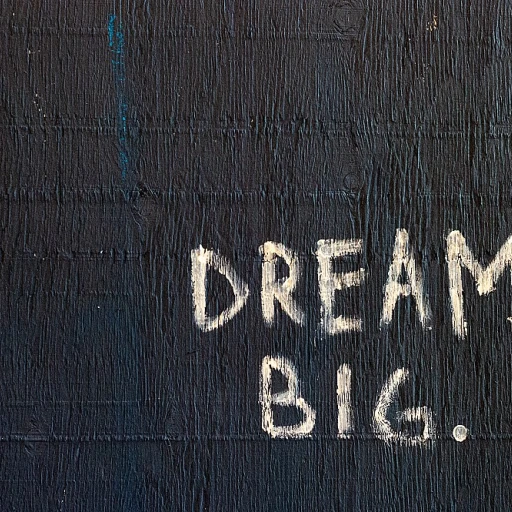
What is the kubler ross curve change?
The foundation of the change curve model
The change curve, often called the Kubler Ross curve, is a model that helps organizations understand the emotional responses people experience during significant change. Originally developed to describe the stages of grief, this model has become a valuable tool in change management, especially when guiding employees through organizational change. The curve highlights how employees move through different stages, from initial denial to eventual acceptance and adoption of new processes or structures.
In the context of employee retention, understanding the Kubler Ross change curve is essential. It provides leaders and managers with a framework to recognize the emotional reactions employees may have during the change process. This awareness helps organizations design better support systems, employee training, and communication strategies to reduce resistance and improve acceptance.
The curve model typically includes several stages: denial, resistance, exploration, and acceptance. Each stage reflects a different emotional state, and employees may move back and forth along the curve as they process change. Recognizing these stages allows change leaders to offer targeted support, which can help employees feel more secure and valued during transitions.
Applying the Kubler Ross model in change management is not just about theory. It’s about practical steps that help employees navigate the emotional journey of change. For example, leaders can use the model to identify when additional support or training is needed, or when communication should be adjusted to address specific concerns. This approach not only supports employees but also helps organizations maintain stability and retain talent during periods of uncertainty.
For those interested in how this model fits into broader organizational strategies, exploring succession planning in tech companies can provide further insights into managing change and supporting employees through each stage of the curve.
Emotional stages employees experience during change
Emotional Reactions Along the Change Curve
Understanding the emotional responses employees experience during organizational change is essential for effective change management. The curve model, often called the Kubler Ross change curve, helps organizations anticipate and address the various emotional stages people go through. Originally developed to describe the stages of grief, this model is now widely used to map employee reactions during the change process. Employees typically move through several emotional stages as they encounter change:- Denial: At first, employees may struggle to accept the reality of change. This stage is marked by disbelief, confusion, or even ignoring the change altogether. Denial can slow down the adoption of new processes or systems.
- Resistance: As the change becomes more apparent, emotional reactions such as frustration, anxiety, or anger may surface. Resistance is a natural response, often fueled by uncertainty or fear of the unknown. Leaders should recognize that this stage is not a sign of failure but a normal part of the curve.
- Exploration: With time and support, employees begin to explore the implications of the change. They may start asking questions, seeking information, or experimenting with new ways of working. This stage is crucial for employee training and support, as it helps people move forward.
- Acceptance: Eventually, employees reach a stage of acceptance. They adapt to the new reality, integrate changes into their daily routines, and may even become advocates for the change. Acceptance is a sign that the change process is working and that resistance is decreasing.
Recognizing signs of resistance and disengagement
Spotting Resistance and Disengagement in the Change Curve
Recognizing when employees are struggling with organizational change is essential for effective change management. The kubler ross curve model, originally developed to describe emotional responses to death and dying, is now widely used to understand how people react to change in the workplace. As employees move through the stages of the curve—denial, resistance, exploration, and acceptance—leaders and managers must be able to identify signs of resistance and disengagement early in the process.- Denial: Employees may ignore new initiatives or act as if the change is not happening. This stage often includes confusion, lack of engagement in meetings, or minimal participation in training sessions.
- Resistance: Emotional reactions such as frustration, anger, or skepticism are common. People might openly question the change, express concerns about job security, or show reluctance to adopt new processes.
- Disengagement: A more subtle sign, disengagement can appear as reduced productivity, absenteeism, or withdrawal from team activities. Employees may stop offering ideas or feedback, signaling a lack of acceptance or support for the change.
Strategies to support employees through each stage
Practical Ways to Guide Employees Through the Change Curve
Supporting employees as they move through the stages of the Kubler Ross change curve is essential for successful organizational change and employee retention. The curve model, originally developed to describe emotional responses to death and dying, helps organizations understand the emotional reactions people experience during change. Each stage—denial, resistance, exploration, and acceptance—requires a tailored approach.- Address denial with clear information: When employees first encounter change, denial is a common reaction. Leaders can help by providing transparent communication about what is changing and why. Sharing the reasons behind the change process reduces uncertainty and builds trust.
- Respond to resistance with empathy: Resistance often follows denial. People may feel anxious or frustrated. Leaders should listen actively, acknowledge concerns, and offer emotional support. This helps employees feel heard and valued, which can reduce pushback.
- Encourage exploration through involvement: As employees move past resistance, they may start exploring new ways of working. Involving them in problem-solving or decision-making increases their sense of ownership and speeds up adoption. Employee training and workshops can help build confidence in new systems or processes.
- Reinforce acceptance with recognition: When employees reach acceptance, recognizing their efforts and progress is important. Positive feedback and celebrating milestones reinforce commitment to the change and support long-term retention.
How Leaders Can Make a Difference
Change leaders play a critical role in guiding teams through the emotional stages of the Kubler Ross model. Their actions can determine how quickly and smoothly employees move through the curve. Here are some effective strategies:- Consistent communication: Regular updates about the change process help reduce uncertainty and keep everyone informed.
- Visible support: Leaders who are present and approachable make it easier for employees to express concerns and seek guidance.
- Tailored support: Not everyone moves through the stages at the same pace. Personalized check-ins and flexible support options help meet individual needs.
- Ongoing training: Providing training sessions and resources ensures employees have the skills needed to adapt, which supports both adoption and retention.
The role of communication in managing change
Clear and Consistent Messaging Reduces Uncertainty
During organizational change, employees often experience a range of emotional responses as described by the kubler ross curve model. Uncertainty and denial are common in the early stages, and clear communication helps people understand what is happening and why. Leaders should provide regular updates about the change process, addressing both the practical and emotional aspects. This transparency helps employees move from resistance to acceptance, reducing anxiety and confusion along the curve.
Two-Way Communication Builds Trust
Effective change management is not just about delivering information. It’s about creating channels for feedback and dialogue. When employees can ask questions and express concerns, it validates their emotional reactions and supports them through each stage of the ross change model. Leaders who listen actively and respond with empathy foster trust, which is essential for successful adoption and support throughout the change curve.
Tailoring Messages to Emotional Stages
The kubler ross model highlights that employees may be at different stages of acceptance or resistance. Communication strategies should be adapted to meet people where they are. For example:
- Denial: Provide factual information and clarify misconceptions about the change.
- Resistance: Acknowledge emotional responses and offer support, such as employee training or resources.
- Acceptance: Share success stories and highlight progress to reinforce positive momentum.
This approach helps organizations address the diverse needs of their workforce and supports employees as they move through the emotional stages of the change curve.
Role of Leaders in Communication
Change leaders play a crucial role in guiding employees through the kubler ross curve. Their ability to communicate with empathy and clarity can influence how quickly teams move from resistance to acceptance. Leaders should be visible, approachable, and proactive in addressing concerns. Consistent messaging from management reassures employees and helps them feel supported throughout the process.
Supporting Adoption Through Training and Resources
Communication is most effective when paired with practical support. Providing employee training, resources, and opportunities for skill development helps employees feel prepared for the changes ahead. This support reinforces the message that the organization values its people and is committed to their success, which is essential for long-term retention during and after the change process.
Measuring the impact of change on employee retention
Tracking Progress Along the Change Curve
Measuring the impact of organizational change on employee retention requires a clear understanding of the curve model and the emotional stages employees experience. As people move through the stages of the Kubler Ross change curve—denial, resistance, exploration, and acceptance—leaders need to track both emotional responses and practical outcomes.- Employee turnover rates: Monitoring turnover before, during, and after the change process helps organizations see if the curve is impacting retention.
- Engagement surveys: Regular pulse checks can reveal shifts in morale, resistance, or acceptance at each stage change. Look for trends in feedback that align with the emotional stages of the curve.
- Absenteeism and productivity: Spikes in absenteeism or drops in productivity may signal unresolved resistance or denial in the change process.
- Training participation: Tracking attendance and engagement in employee training sessions can indicate how well employees are moving toward acceptance and adoption.
Using Data to Guide Support Strategies
The Kubler Ross model helps organizations identify where employees are on the curve and tailor support. For example, if data shows many employees are stuck in the resistance stage, leaders can increase communication, offer more support, or provide targeted training. This approach not only helps employees feel heard but also increases the likelihood of successful change adoption.Feedback Loops and Continuous Improvement
Change management is an ongoing process. Leaders should establish feedback loops to gather insights from employees at each stage. This allows for real-time adjustments to support strategies and helps ensure that emotional reactions are addressed promptly. By regularly reviewing these metrics, organizations can refine their approach and improve employee retention outcomes during future changes.| Metric | What It Reveals | Action |
|---|---|---|
| Turnover Rate | Overall retention impact of change | Adjust support or training if rates rise |
| Engagement Scores | Emotional responses at each stage | Increase communication, address concerns |
| Training Participation | Adoption and acceptance of change | Offer additional resources if participation drops |
| Absenteeism | Potential resistance or disengagement | Provide targeted support, check in with teams |
By connecting the stages of the Kubler Ross change curve to measurable outcomes, leaders can better support employees, reduce resistance, and improve retention throughout the change process.












